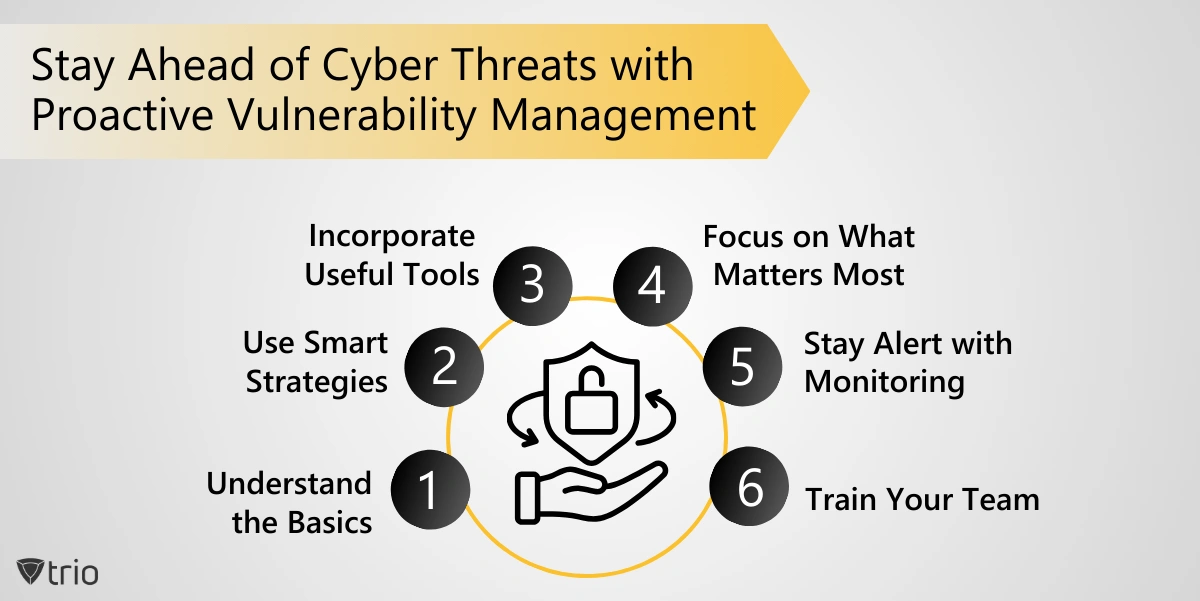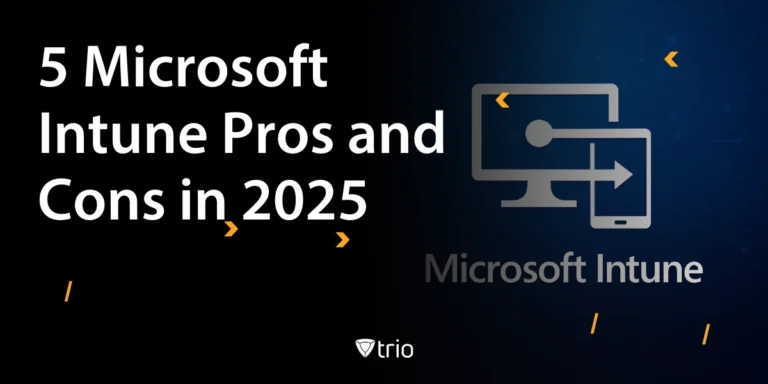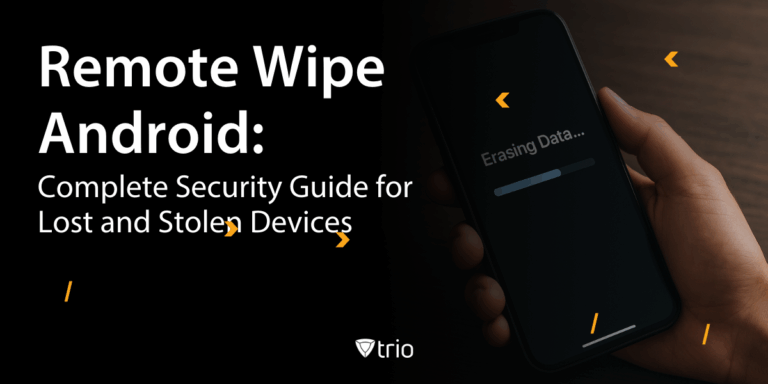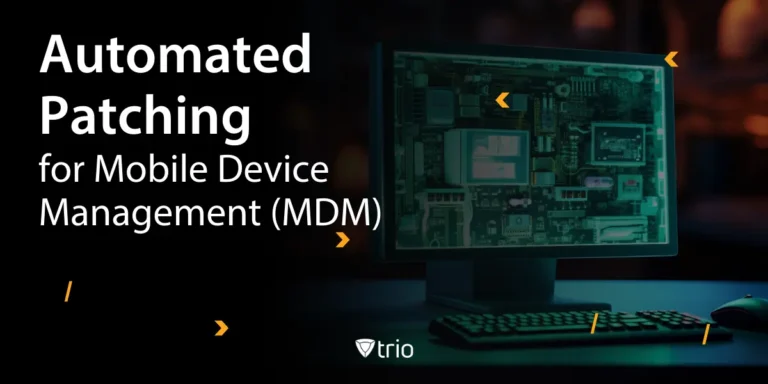Vulnerability management involves locating, assessing, prioritizing, and addressing potential security holes or vulnerabilities in a business's network and is one of the most crucial components of IT security. These security holes could be used by attackers to disrupt processes or gain unauthorized access. As it may proactively guard against security risks by ensuring that known vulnerabilities are consistently identified, evaluated, and patched using configuration changes or other security measures, vulnerability management is an essential part of cybersecurity. Implementing effective vulnerability management practices can also contribute to IT Risk Management by reducing the likelihood and impact of security breaches and minimizing potential financial and reputational losses for the organization. This blog will describe how vulnerability management works and how it can improve the security of your business.
What Are the Differences Between a Vulnerability, a Risk, and a Threat?
Vulnerability, risk, and threat are all cybersecurity concepts, each playing a crucial role in understanding and managing security challenges. These are the key differences:
Vulnerability: A vulnerability is a weakness or flaw in a system's design, implementation, or operation that could be exploited to compromise the system's security.
Threat: A threat is any potential danger or harmful event that may exploit a vulnerability, causing damage to assets or compromising the integrity, availability, or confidentiality of information.
Risk: Risk is the likelihood of a threat exploiting a vulnerability, resulting in harm to an organization's assets. It involves the assessment of the probability and impact of a security incident.
Vulnerability Management vs. Vulnerability Assessment
Let's look at the difference between vulnerability management and vulnerability assessment. Vulnerability assessment (VA) is a part of the ongoing vulnerability management (VM) lifecycle. In contrast to VA, which finds and categorizes the hazards in your network architecture, VM makes judgements about whether to mitigate, remediate, or accept those risks.

How Are Vulnerabilities Discovered?
There are different ways that vulnerabilities can be discovered. Some of the most common ones include:
Vulnerability Scanners: Vulnerability scanners are automated tools that scan systems, networks, and software applications to detect known vulnerabilities. They compare the configuration and code of the target against a database of known vulnerabilities and provide a list of issues that need addressing.
Penetration Testing: Penetration testing, or ethical hacking, involves skilled individuals attempting to exploit system weaknesses in a controlled manner. This method provides a real-world assessment of security posture, uncovering vulnerabilities that might not be apparent through automated scans. Penetration testers simulate attacker behavior to identify vulnerabilities that need remediation.
Identifying vulnerabilities in mobile devices and operating systems typically involves:
- Mobile Device Management (MDM): MDM solutions help identify vulnerabilities in mobile devices by continuously monitoring their configuration and security settings. They can enforce policies, such as requiring device encryption, secure password policies, and timely OS updates to minimize potential risks.
- Operating System Updates: Regularly updating mobile operating systems and their applications is key to identifying and addressing vulnerabilities. Operating system vendors release security patches to fix known issues, so keeping software up to date is vital for mobile device security.

How are Vulnerabilities Ranked and Categorized?
Vulnerabilities are identified based on their severity and potential impact using vulnerability management tools and software. These tools often assign a Common Vulnerability Scoring System (CVSS) score to vulnerabilities, considering factors like exploitability, impact, and ease of mitigation. Vulnerabilities are typically classified as "Critical," "High," "Medium," or "Low" based on these scores, helping IT and security teams prioritize remediation efforts. This proactive approach is crucial in mitigating the risk of a data breach. Vulnerability management solutions provide detailed reports, dashboards, and risk assessment capabilities to aid organizations in prioritizing and addressing vulnerabilities in a structured manner, focusing on those that pose the greatest risk to their systems and data.
How to Automate Vulnerability Management
A better approach to managing vulnerability assessments and application security is incorporating MDM solutions. They can be incorporated into a vulnerability management system to increase security. Businesses can monitor and control the security of mobile devices, such as tablets and smartphones, with MDM. This allows them to confirm that the devices are up-to-date, secure, and compliant with security guidelines. This is particularly crucial in today's mobile-first world because mobile devices can act as entry points for security flaws. MDM solutions assist organizations in maintaining comprehensive and efficient security protocols and simplify vulnerability assessment by integrating mobile devices throughout the process.
How to Manage Vulnerabilities
Effective vulnerability management involves implementing a range of strategies to mitigate security risks. Some key strategies include:
Managing Vulnerabilities with Strategies
Effective vulnerability management is achieved through a combination of strategies. Patching, which involves regularly applying software updates and patches to address known vulnerabilities in operating systems, applications, and firmware, is a fundamental practice. It's complemented by disabling unnecessary services, a technique that reduces the attack surface and eliminates potential points of exploitation. Implementing comprehensive security policies covering password complexity, access controls, data encryption, and device configuration is equally important. By consistently enforcing these policies, organizations can prevent the introduction and exploitation of vulnerabilities, thereby enhancing their overall security posture.
Role of MDM Solutions in Mitigating Vulnerabilities
MDM solutions are invaluable for mitigating vulnerabilities, especially in the context of mobile devices. MDM plays a pivotal role in vulnerability management by enforcing security policies on mobile devices, ensuring that strong passwords are used, encryption is enabled, and access is restricted to corporate resources. MDM tools also automate the distribution of operating system and application updates to mobile devices, reducing the window of vulnerability. Additionally, MDM solutions continuously monitor the security and configuration of mobile devices, promptly identifying and remediating any issues, which is essential in managing vulnerabilities effectively.
Evaluating and Selecting MDM Solutions
When choosing an MDM solution, it's vital to conduct a comprehensive evaluation process. Begin by understanding your organization's unique requirements, considering factors like the number and types of devices, operating systems, and security policies needed. Compare MDM solutions based on features such as remote device management, policy enforcement, vulnerability scanning capabilities, reporting tools, and scalability. Ensure the chosen MDM solution can seamlessly integrate with your existing IT infrastructure and support the specific mobile devices and operating systems in use. Evaluating the reputation and support services of MDM vendors, seeking customer reviews and references, and assessing the total cost of ownership are also crucial steps in selecting the best MDM solution that aligns with your organization's security needs and budget.
By implementing an effective vulnerability manager, leveraging MDM solutions for mobile device security, and conducting a thorough evaluation of MDM options, organizations can significantly enhance their security posture and reduce the risk of vulnerabilities being exploited.
Monitoring and Reporting
Ongoing monitoring and reporting of vulnerabilities are essential for promptly detecting and addressing emerging threats, ensuring transparency, prioritizing risks, and facilitating a coordinated response. Clear protocols for reporting and responding to vulnerabilities streamline the process and enable an organized, unified approach to security, promoting efficient risk mitigation. Additionally, regular updates and patches for both devices and MDM solutions are important to make sure you correctly prioritize what to patch with a comprehensive vulnerability assessment for maintaining a secure IT environment by addressing known vulnerabilities, enhancing security, and reducing the risk of exploitation.

Employee Education
Best Practices for an Effective Vulnerability Management Program
To make use of the vulnerability management benefits businesses should include establishing a program for systematic identification and mitigation of security vulnerabilities, conducting regular assessments, and implementing a proactive patch management system. The key is to continually adapt to new threats by embracing a culture of continuous improvement. This involves staying informed about emerging risks, updating security policies, and refining strategies to ensure the vulnerability management program remains effective in addressing the latest cybersecurity challenges.
Conclusion
To sum it all up, vulnerability management is a critical facet of IT security, involving the identification, assessment, prioritization, and mitigation of potential weaknesses in an organization's systems. The effectiveness of vulnerability management lies in adopting a proactive approach, with strategies like patching, disabling unnecessary services, and implementing comprehensive security policies. Evaluating and selecting suitable MDM solutions, like Trio to further enhance security contributes to a resilient defense against cyber threats. Emphasizing continuous improvement and adaptation to emerging risks through regular assessments and updates ensures the sustained efficacy of vulnerability management software in addressing evolving cybersecurity challenges.
Get Ahead of the Curve
Every organization today needs a solution to automate time-consuming tasks and strengthen security.
Without the right tools, manual processes drain resources and leave gaps in protection. Trio MDM is designed to solve this problem, automating key tasks, boosting security, and ensuring compliance with ease.
Don't let inefficiencies hold you back. Learn how Trio MDM can revolutionize your IT operations or request a free trial today!





